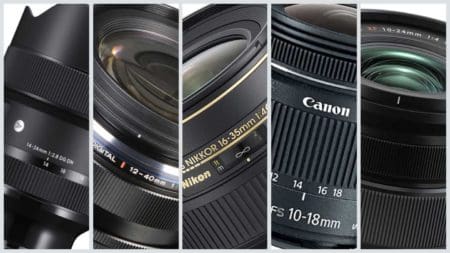Sigma’s 105mm f/2.8 EX DG OS HSM Macro lens, which has been around since 2012 and is available in Canon EF, Nikon F, Sony A and Sigma mounts, is a popular optic with a strong reputation. The new Sigma 105mm F2.8 DG DN Macro Art does not disappoint by comparison as it delivers very high-quality images.
Although macro photography traditionally involves using small aperture settings, the Sigma 105mm F2.8 DG DN Macro Art performs extremely well wide-open. In fact, there seems to be little or no benefit to sharpness if you close the aperture down from f/2.8 to f/4 or f/5.6. The detail is also maintained reasonably well into the corners of the frame, and again, I could see no discernable benefit from closing the aperture down from the maximum setting.
By the time the aperture is closed to f/11, there’s a very slight hint of detail-softening impact of diffraction if you examine images at 100% on-screen. Closing down to f/22 makes the softening more apparent at high magnification, but it’s not a major issue. In fact, when comparing images shot on the 61Mp Sony A7R IV at different apertures, it takes a very keen eye to spot a difference in the central sharpness of an f/22 image and an f/4 or f/2.8 image when they are sized to fill a 27-inch screen.
Sigma has created profiles for the 105mm F2.8 DG DN Macro Art which can be applied in-camera using the ‘Lens Compensation’ settings in the camera’s menu or at the raw file processing stage in Adobe Camera Raw or Lightroom. These profiles can be used to correct vignetting, distortion and chromatic aberration. None of these issues is particularly problematic, there’s just mild corner shading at the wider apertures and a mere suggestion of pincushion distortion that you may notice if you photograph a subject with lots of straight lines.
Whether you decide to use the in-camera corrections or not, you can activate and deactivate them, or tweak the values in Adobe Camera Raw and Lightroom to get the result you want.
As promised by Sigma, the 105mm F2.8 DG DN Macro Art’s focusing system is compatible with Sony’s Eye AF, including the new Bird Eye AF that’s available on the Sony A1. It’s also fairly fast and assured. It’s not the fastest lens when it comes to focusing, but it’s not slow either and it’s very competent.
Nevertheless, as usual with very close subjects, it may be preferable to switch to manual focusing, and as mentioned in the build and handling section, this works extremely well with a distance scale popping up promptly in the viewfinder or on the screen to direct the adjustment.
Although quiet, the AF system makes a slight sound that would be picked up by a close mic. There’s also slight focus breathing which means the framing changes a bit with the focus distance. Both of these points could be issues for videographers.
Out of focus areas are handled well and small highlights are rounded with no obvious aberrations such as ‘onion rings’ or fringing.










